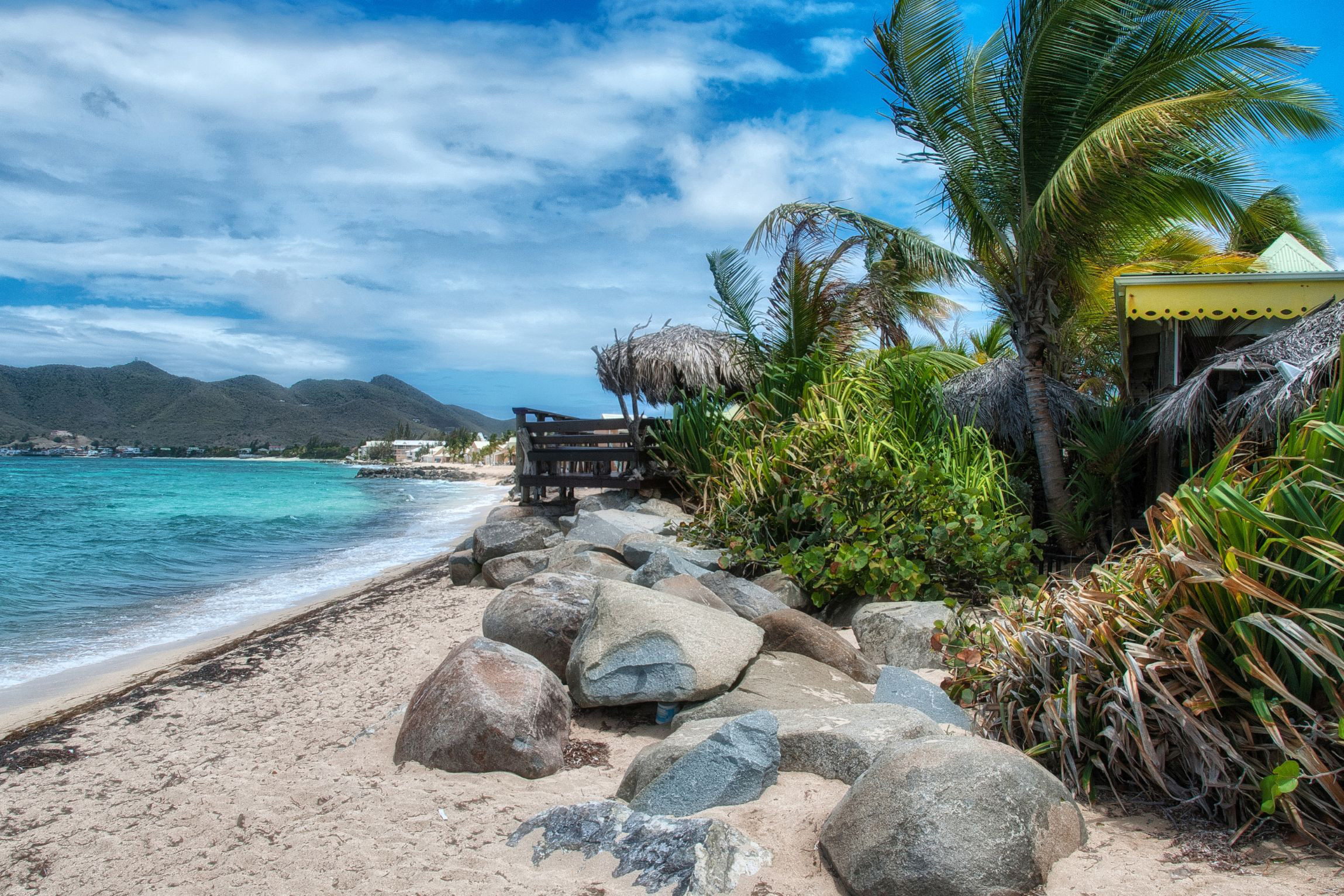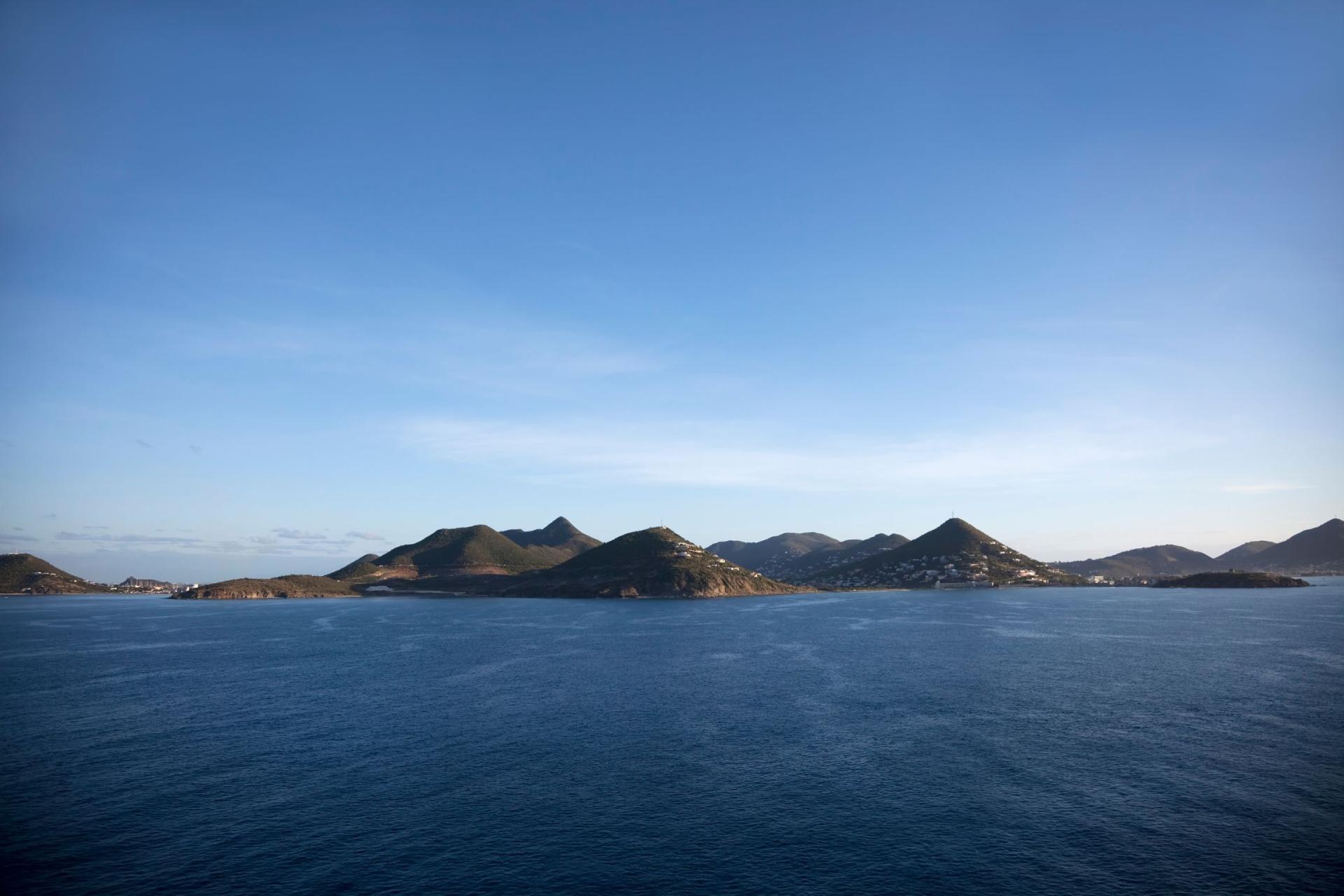The climate in Saint Martin
St Martin enjoys a tropical maritime climate, which means consistent warm temperatures throughout the year with slight seasonal variations.
The east coast is swept by trade winds that interact with the island’s reliefs, concentrating the clouds.
These clouds condense heat and turn it into the showers, making the vegetation on the leeward coast lush and green.
On the west side, the limestone plateau of Terres Basses is more sheltered from the rains, creating a drier vegetation consisting of scrubland and cacti.
St Martin’s climate by season
High tourist season (December to April)
Weather conditions
This period corresponds to the dry season, with pleasant temperatures, little rain, and a low risk of hurricanes.
Tourist activities
This season guarantees great moments for beach activities, diving, sailing, and island exploration. You can fully enjoy the sun and waters without worrying about disruptive weather.
Low tourist season (May to October)
Weather Conditions
The low season corresponds to the rainy season with cooler temperatures and a risk of hurricanes from July to September.
Tourist activities
Although showers are more frequent, you can still enjoy water activities and the beaches. There will be fewer tourists, and prices for activities are usually more affordable than during the high season.
Temperatures in St Martin
The average annual temperature ranges between 77°F and 86°F, offering comfortable warmth.
Temperature variations between the two seasons are minimal.
The hottest months, from June to October, have sea temperatures around 86°F, while the cooler months, from December to February, have temperatures around 77°F.
Precipitation in St Martin
During the rainy season, showers are more frequent and intense. They often occur as brief but heavy tropical downpours.
During the dry season, rainfall is less common, allowing you to enjoy your holiday under a full sun.

Bay of St Martin
Humidity in St Martin
Relative humidity is high throughout the year, ranging from 70% to 80%.
Constant trade winds help alleviate the heat, making the climate generally comfortable.
Wind and hurricanes in St Martin
Trade winds regularly blow from the northeast, bringing a refreshing breeze that tempers the tropical heat.
The hurricane season coincides with the rainy season, from June to November. St Martin is in a region prone to tropical cyclones, so extra preparations and precautions are necessary during this period.
The sun in St Martin
The sun rises between 5 and 6 am and sets between 5 and 7 pm. The UV index is very high, so it is highly recommended to use sunscreen and stay hydrated throughout the day.
Start your day by enjoying the early waves and attempting surfing in St Martin.

Beach in St Martin
When to visit St Martin?
Depending on your preferences, you may choose to visit St Martin during the high or low season.
During the high season, you’ll enjoy a sunny stay with very little chance of showers. However, the island will be more crowded, and flight prices will be higher.
During the low season, the island is less crowded, and prices are lower, but rain showers or tropical disturbances could impact your trip.
Book your villa rental in St Martin during the season that suits you best!

